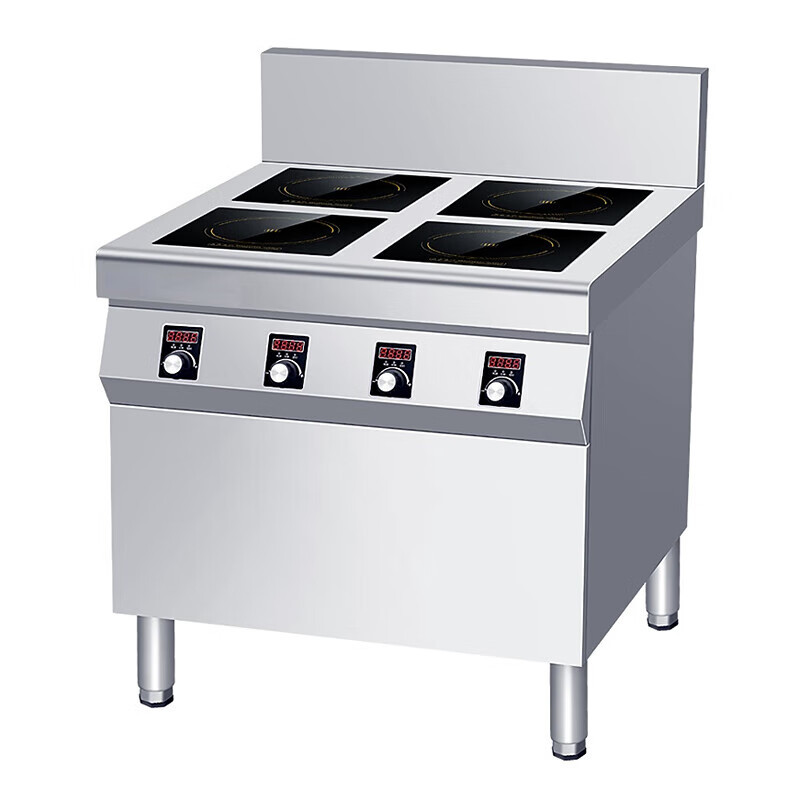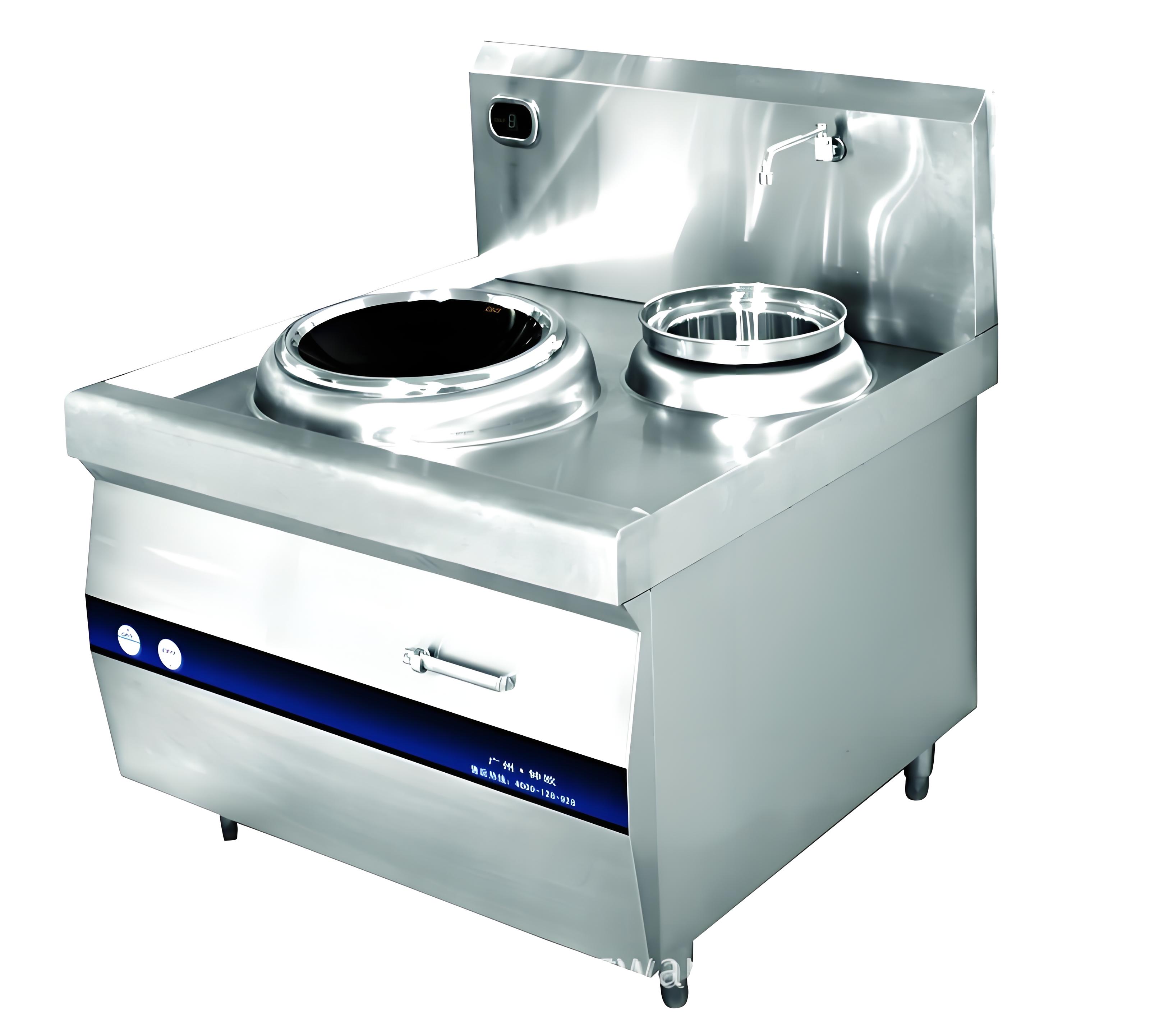As someone who’s spent years working with kitchen appliances and electrical systems, I’ve seen firsthand how transformative high-power induction cooktops can be. They’re fast, efficient, and precise, making them a favorite for home cooks and professionals alike. But with great power comes great responsibility. These appliances draw significant electrical loads, and without proper precautions, they can strain your home’s electrical system, potentially leading to dangerous situations like circuit overloads or, in extreme cases, fires. Let me share practical, experience-based advice to ensure your induction cooktop operates safely, keeping your kitchen and home secure.

Understanding the Electrical Demands of Induction Cooktops
Induction cooktops are marvels of modern technology, using electromagnetic fields to heat cookware directly. However, their high power—often ranging from 2,000 to 3,600 watts per burner—can tax your electrical system if not managed properly. Unlike traditional gas or electric stoves, induction cooktops require a stable, high-capacity power supply, typically 220-240 volts in most homes. If your wiring, circuit breaker, or outlet isn’t up to the task, you risk overheating, tripped breakers, or worse.
I’ve encountered countless homeowners who underestimated their cooktop’s demands, only to face flickering lights or buzzing outlets. To avoid these issues, you need to assess your electrical setup before plugging in that shiny new appliance.
Step 1: Verify Your Electrical System’s Capacity
Before installing a high-power induction cooktop, check your home’s electrical capacity. Most modern homes have a 200-amp service, but older homes might be limited to 100 amps or less. A single high-power cooktop can consume 30-50 amps when all burners are in use, so it’s critical to ensure your system can handle the load.
Here’s how to evaluate your setup:
Check your main panel: Locate your electrical panel and confirm its amperage rating. If it’s 100 amps or less, consult an electrician before proceeding.
Inspect circuit breakers: High-power appliances typically require a dedicated 40-50 amp circuit with a double-pole breaker. Ensure your cooktop is connected to one.
Examine wiring: Older homes may have outdated wiring (e.g., aluminum instead of copper). Aluminum wiring is less efficient and can overheat under heavy loads.
I once helped a client whose 1970s home had outdated wiring. They installed a high-end induction cooktop without upgrading their system, and the circuit overheated within weeks. A professional electrician replaced the wiring and installed a dedicated circuit, solving the issue. Don’t skip this step—it’s the foundation of safe operation.
Step 2: Install a Dedicated Circuit
A dedicated circuit is non-negotiable for high-power induction cooktops. This means the cooktop has its own circuit breaker and wiring, separate from other appliances. Sharing a circuit with other high-draw devices—like a microwave or oven—can overload the system, leading to tripped breakers or damaged wiring.
Here’s what a proper setup looks like:
|
Component |
Requirement |
Why It Matters |
Common Mistake |
|---|---|---|---|
|
Circuit Breaker |
40-50 amp double-pole breaker |
Handles high current safely |
Using a shared or undersized breaker |
|
Wiring |
8-gauge copper wire |
Supports heavy loads without overheating |
Using outdated or aluminum wiring |
|
Outlet |
NEMA 14-50 or compatible |
Matches cooktop’s plug and voltage |
Mismatched or low-capacity outlet |
|
Grounding |
Properly grounded connection |
Prevents electrical shocks |
Skipping grounding checks |
When I upgraded my own kitchen, I hired a licensed electrician to install a dedicated 50-amp circuit with 8-gauge copper wiring. It cost a bit upfront, but the peace of mind was worth it. If you’re unsure about your setup, don’t guess—call a professional.

Step 3: Choose the Right Cooktop for Your Setup
Not all induction cooktops are created equal. Some models offer power management features that limit total wattage when multiple burners are in use, reducing strain on your electrical system. For example, a cooktop with a 7,200-watt total output might cap individual burners at lower wattages when all are active.
Before buying, check the cooktop’s specifications:
Total power consumption: Ensure it aligns with your circuit’s capacity.
Voltage requirements: Most require 220-240 volts, but some portable models use 120 volts (less powerful but easier on circuits).
Plug type: Confirm it matches your outlet (e.g., NEMA 14-50).
I once advised a friend to choose a cooktop with a power-sharing mode because their home’s electrical panel was already near capacity. This feature saved them from costly panel upgrades while still delivering excellent performance.
Step 4: Maintain Proper Ventilation and Clearance
High-power induction cooktops generate heat—not just in the cookware but in their internal electronics. Poor ventilation can cause the appliance to overheat, stressing its components and your electrical system. I’ve seen cooktops fail prematurely because they were crammed into tight spaces with no airflow.
To ensure proper ventilation:
Follow manufacturer guidelines: Most require 2-4 inches of clearance around the cooktop and adequate ventilation below.
Avoid enclosing the cooktop: Don’t install it in a fully sealed cabinet without vents.
Clean regularly: Dust and grease buildup can obstruct cooling fans, increasing heat stress.
In my experience, a simple habit of wiping down the cooktop and checking vents monthly can extend its lifespan and reduce electrical risks.
Step 5: Monitor Usage Patterns
Even with a proper setup, how you use your induction cooktop matters. Running all burners at maximum power for extended periods can push your circuit to its limits. Here are some practical tips:
Stagger burner use: Avoid running all burners at full power simultaneously unless necessary.
Use power management settings: Many cooktops let you adjust power levels to balance performance and electrical load.
Watch for warning signs: Flickering lights, warm outlets, or frequent breaker trips indicate an overloaded circuit.
I learned this lesson early in my career when a restaurant client kept tripping breakers during peak hours. By scheduling heavy cooking tasks across different times, they reduced strain on their system without sacrificing output.

Step 6: Regular Maintenance and Inspections
Like any high-power appliance, induction cooktops require regular maintenance to stay safe. Over time, connections can loosen, wiring can degrade, and components can wear out. Schedule annual inspections by a licensed electrician to check:
Wiring integrity: Look for fraying, corrosion, or heat damage.
Breaker performance: Ensure it trips correctly under overload conditions.
Outlet condition: Verify it’s secure and free of burn marks or wear.
I make it a point to have my home’s electrical system checked every two years, especially since I rely heavily on my induction cooktop for testing recipes. This small investment has saved me from potential hazards multiple times.
Step 7: Install Safety Devices
For added protection, consider installing safety devices to monitor and protect your electrical system:
Surge protector: High-power appliances are sensitive to voltage spikes, which can damage electronics or cause fires.
Arc-fault circuit interrupter (AFCI): These breakers detect dangerous electrical arcs, common in overloaded circuits.
Smoke and carbon monoxide detectors: Place them near the kitchen to catch early signs of electrical issues.
When I remodeled my kitchen, I added an AFCI breaker to the cooktop’s circuit. It’s a small expense for significant peace of mind, especially in a busy household.
Real-World Example: A Close Call
A few years ago, I worked with a family who installed a high-power induction cooktop without checking their home’s wiring. They loved the appliance but started noticing a faint burning smell after long cooking sessions. An electrician found that their outdated 10-gauge wiring was overheating under the cooktop’s 40-amp load. Upgrading to 8-gauge copper wiring and a dedicated circuit solved the problem, but it was a stark reminder of how easily issues can escalate.
Common Myths About Induction Cooktops and Electrical Safety
Let’s debunk a few misconceptions I’ve heard over the years:
Myth: “Induction cooktops are just like regular electric stoves.”
Truth: They draw more power and require specialized circuits.
Myth: “A standard outlet can handle any cooktop.”
Truth: High-power models need specific outlets and wiring.
Myth: “Circuit breakers will always protect you.”
Truth: Breakers can fail or be undersized, so proper setup is critical.

Wrapping Up: Safety First, Always
Using a high-power induction cooktop can elevate your cooking game, but it demands respect for its electrical requirements. By verifying your home’s capacity, installing a dedicated circuit, choosing the right model, and maintaining your setup, you can enjoy the benefits of induction cooking without risking your electrical system. I’ve seen too many close calls to take shortcuts—investing in proper installation and maintenance is worth every penny.
If you’re unsure about any step, don’t hesitate to consult a licensed electrician. Your safety and peace of mind depend on it. Happy cooking, and stay safe!
Related Questions and Answers
Q: Can I plug a high-power induction cooktop into a regular outlet?
A: No, most high-power induction cooktops require a 220-240 volt, 40-50 amp outlet (e.g., NEMA 14-50). Regular 120-volt outlets can’t handle the load and could overheat, posing a fire risk. Always check the cooktop’s specifications and consult an electrician.
Q: How do I know if my electrical panel can support an induction cooktop?
A: Check your panel’s amperage rating (usually 100 or 200 amps) and ensure you have enough capacity for a 40-50 amp dedicated circuit. An electrician can assess your panel’s load and recommend upgrades if needed.
Q: What happens if I overload my circuit with an induction cooktop?
A: Overloading can cause tripped breakers, overheated wiring, or even fires in extreme cases. Signs include flickering lights, warm outlets, or a burning smell. Stop using the cooktop and call an electrician immediately.
Q: Are portable induction cooktops safer than built-in models?
A: Portable models often use 120 volts and lower wattage, making them less demanding on your electrical system. However, they still require a properly rated outlet and should not share a circuit with other high-draw appliances.





